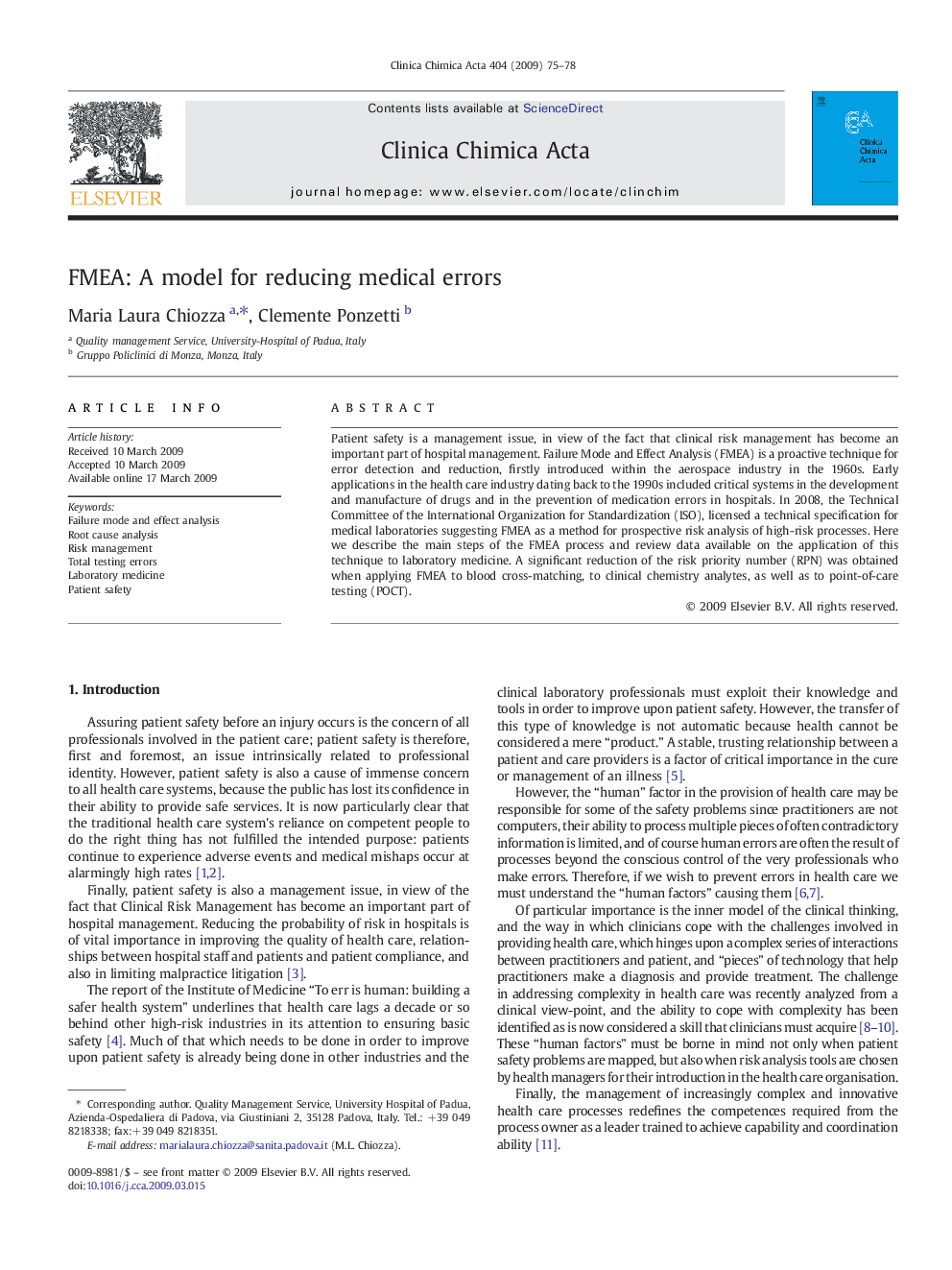| Article ID | Journal | Published Year | Pages | File Type |
|---|---|---|---|---|
| 1966102 | Clinica Chimica Acta | 2009 | 4 Pages |
Patient safety is a management issue, in view of the fact that clinical risk management has become an important part of hospital management. Failure Mode and Effect Analysis (FMEA) is a proactive technique for error detection and reduction, firstly introduced within the aerospace industry in the 1960s. Early applications in the health care industry dating back to the 1990s included critical systems in the development and manufacture of drugs and in the prevention of medication errors in hospitals. In 2008, the Technical Committee of the International Organization for Standardization (ISO), licensed a technical specification for medical laboratories suggesting FMEA as a method for prospective risk analysis of high-risk processes. Here we describe the main steps of the FMEA process and review data available on the application of this technique to laboratory medicine. A significant reduction of the risk priority number (RPN) was obtained when applying FMEA to blood cross-matching, to clinical chemistry analytes, as well as to point-of-care testing (POCT).
